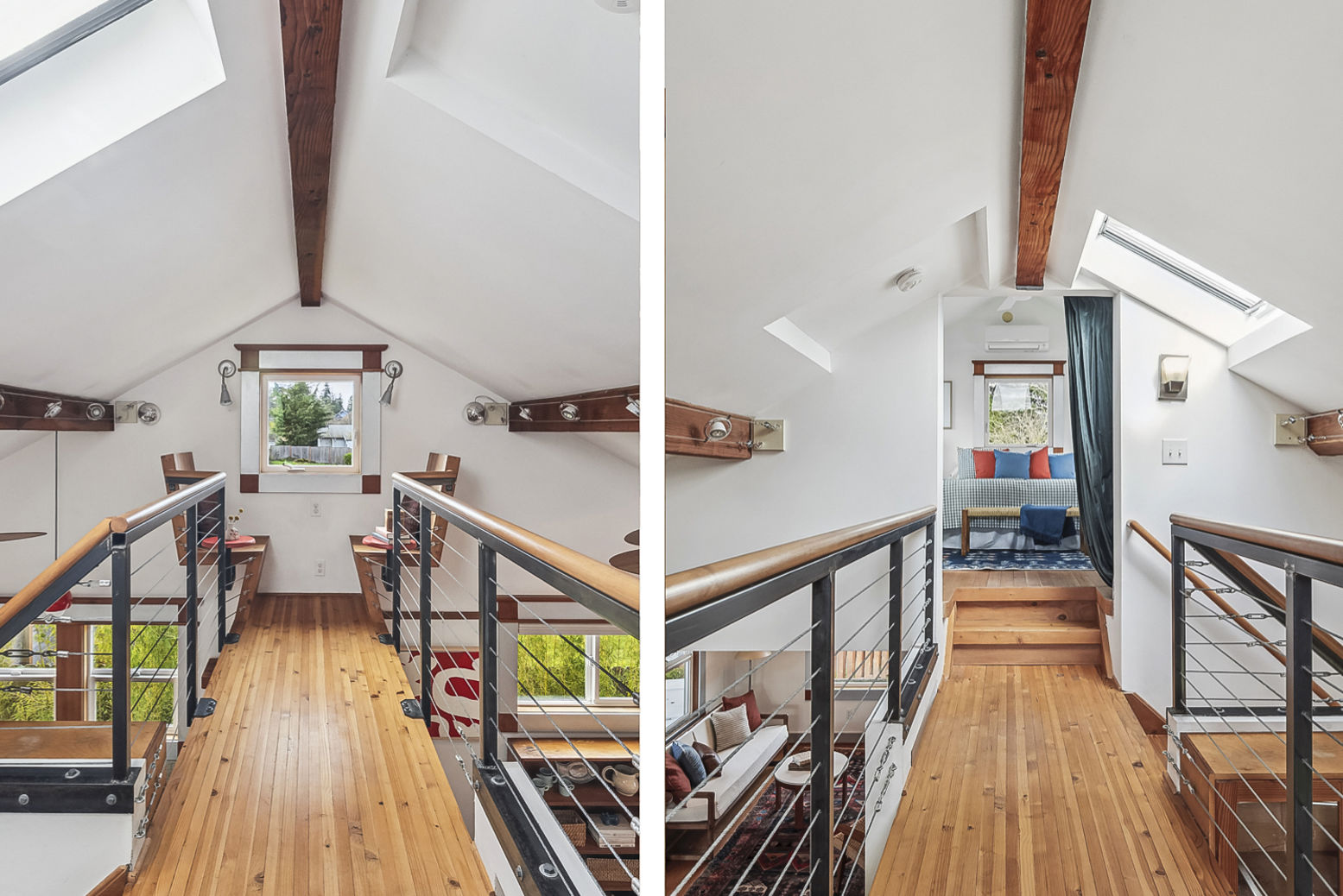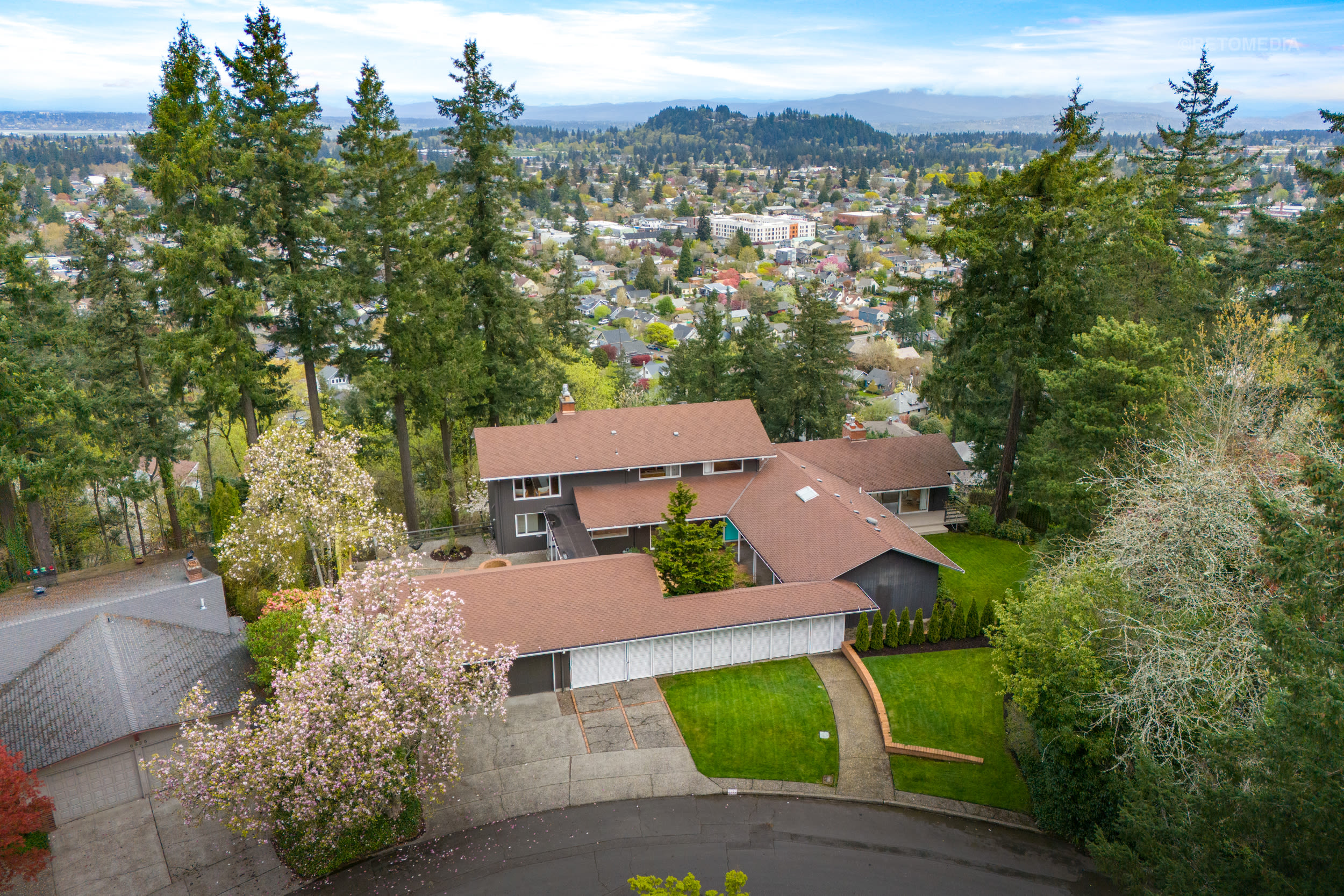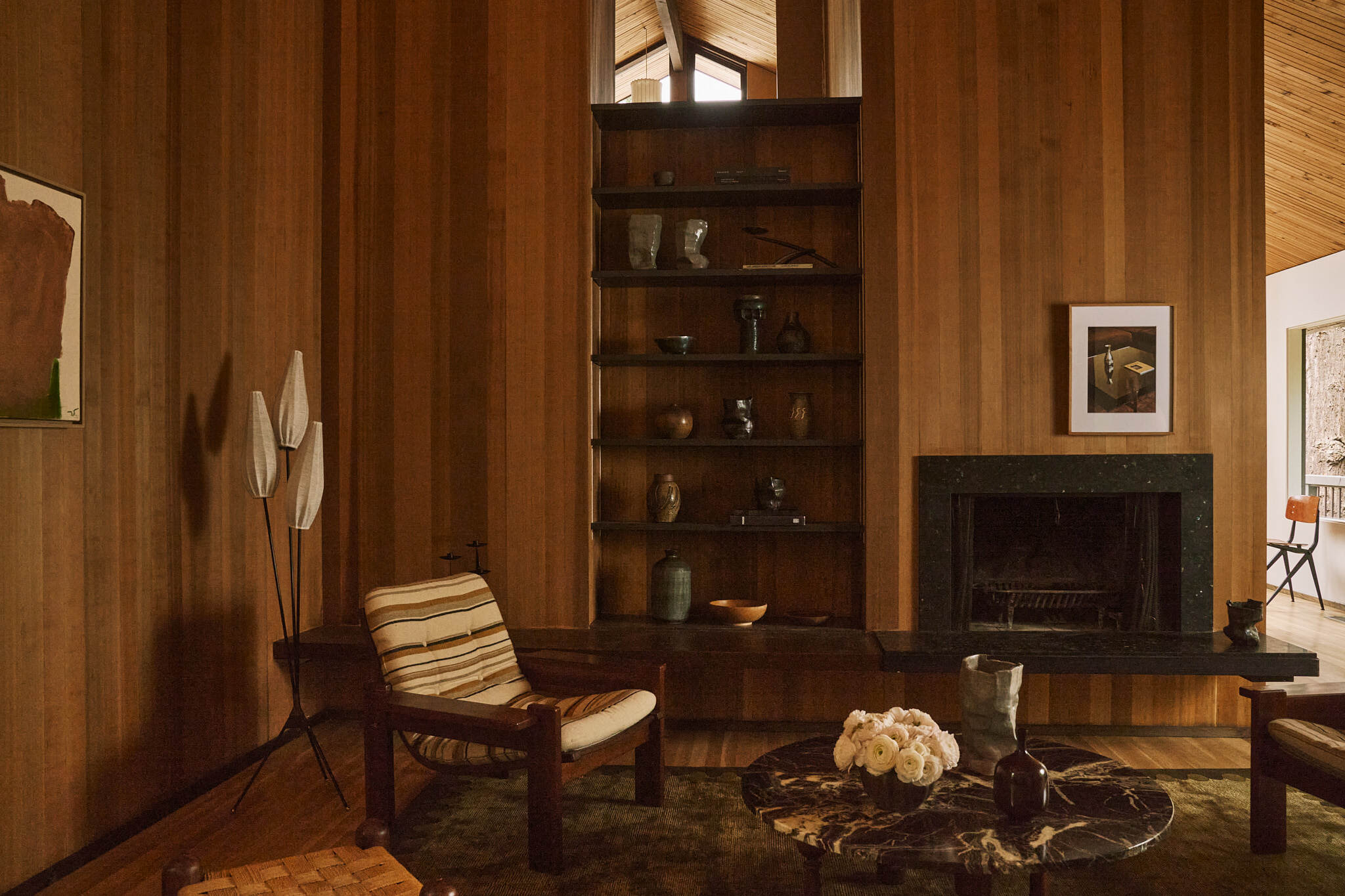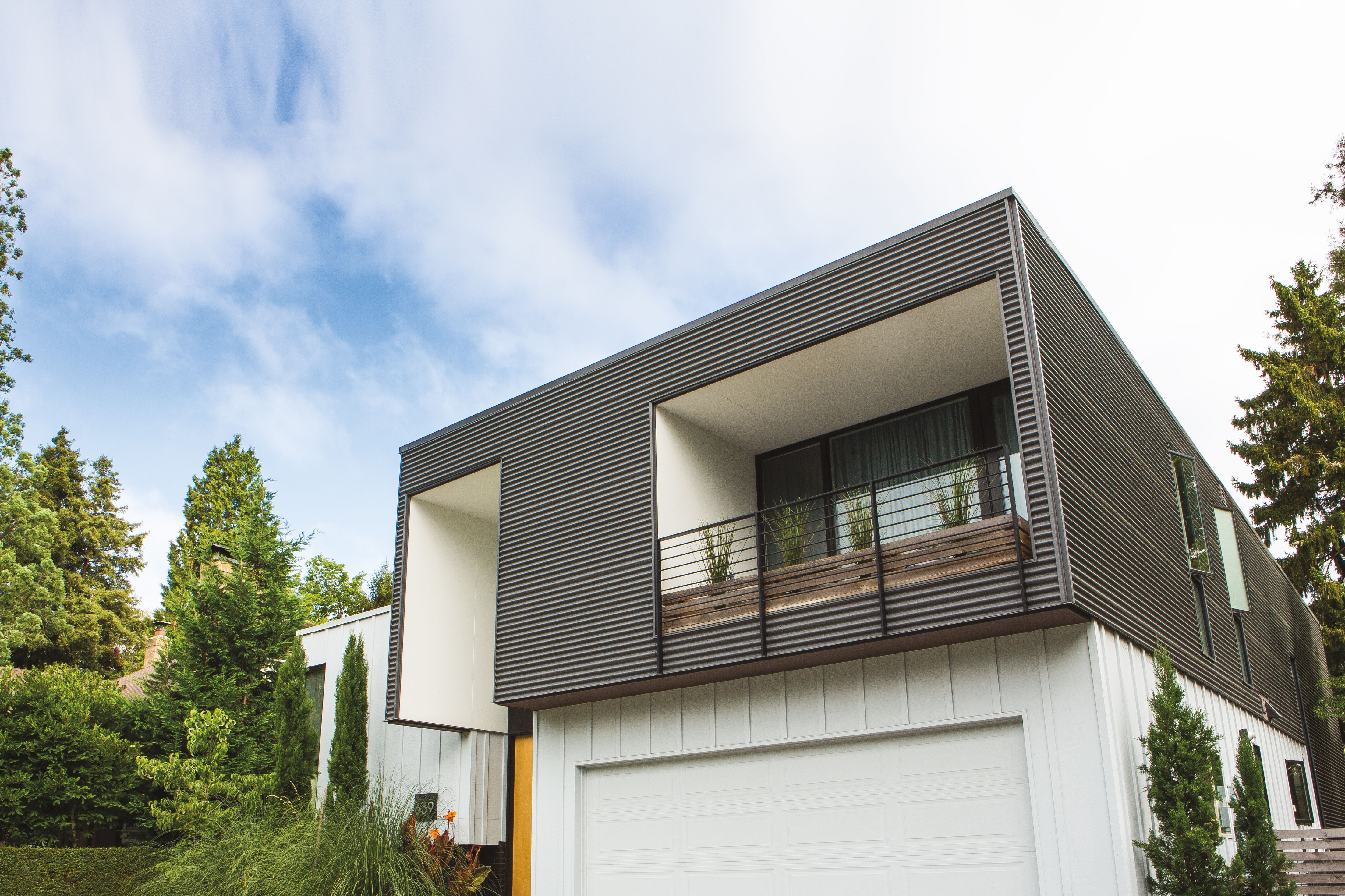
An Ambitious Midcentury Remodel in Southeast Portland Flips the Script
Deep inside a leafy, shady pocket of the Garthwick neighborhood at Sellwood’s southern edge, a couple lives in an airy, light-flooded midcentury-modern retreat. It’s really hard to say what they do for a living (if anything), or where they came from. And nobody really likes them all that much. They’re intellectually insufferable. They’re aggressively upper-middle-class, relentlessly too cool for you. Erin Leedy, who lives (shall we say) in the area and knows this duo up close and personal, succinctly describes them as “jerks.”
They are Brendan and Michelle Marston, the couple everyone loves to hate on the show that every Portlander must at least pretend to hate: Portlandia. In a series of sketches designed to stoke intense class hatred (or class self-hatred) of the post-hipster bourgeoisie, Brendan and Michelle make a fawning documentary about their son, Grover, and fight to purge Mike and the Mechanics from his school’s record collection. They attend Pickathon via video drone technology, which lets them bask in that music festival’s farmstead vibes from their sofa, amid design-y splendor.
And, in the Portlandia subdimension of the cable multiverse, they live in Erin Leedy’s home. When Leedy watches the sketches the satirical series has filmed in her house, off and on since 2015, she sees Michelle sitting at her kitchen counter with a cup of coffee and an open laptop, an act that’s part of the homeowner’s real daily routine.
“It’s odd,” she reckons.
In fact, Brendan and Michelle are just two of a cast of characters responsible for the plot twists that changed the destiny of what was once—in the real-life words of real-life architect Paul McKean—“the worst house in a great neighborhood.” The flesh-and-blood players are far more interesting than the Marstons.
What became the Leedy House was a vanilla 1964 split-level. When Erin, now 44, and her then-husband, Greg, 54, got their hands on it in 2010, they scrapped everything but the bones.
The Leedys knew what they wanted: a modern home with clean lines and open spaces. Both Erin and Greg have industrial design backgrounds—she’s now a senior vice president at a market-research consultancy; he manages the innovation lab for the University of Oregon’s Sports Product Management program—and both love midcentury-modern aesthetics. They needed an architect to render their rough draft into the genuine article. They dialed up Paul McKean.
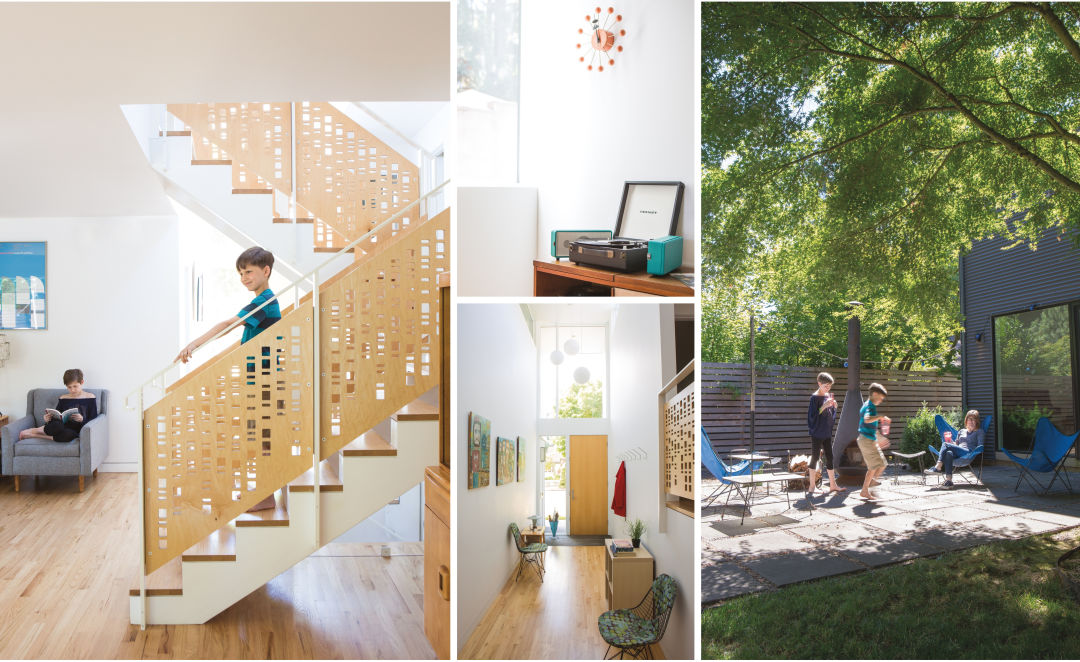
Left: The stair panels' laser-cut patterns hide a secret message. Right: The home‘s aesthetic and layout blend midcentury-flavored décor, family-friendly spaces, and commissioned local art.
Image: Christopher Dibble
McKean began his career in Chicago, where he worked on a team that renovated the interior of Frank Lloyd Wright’s famed Henderson House, in Elmhurst, Illinois. “I am certainly a Modernist—with a big M—at heart,” the 48-year-old architect says. “Growing up in Chicago I was exposed to a modernism that was very functional, refined, and respectful of the construction process. Hopefully that rubbed off on me.”
In 2005, he started his own design practice in Portland. The following year, he was awarded a Van Evera Bailey fellowship, given to promising Oregon architects and design professionals. McKean spent that money on travels to 10 countries where he researched prefab design and construction methods, along the way steeping himself in a midcentury-modern style with an emphasis on durability, affordability, and energy efficiency.
“The biggest challenge was putting something modern in Garthwick,” McKean recalls, noting the neighborhood’s processions of Tudors, Arts and Crafts, and Craftsman-style homes. To stave off the backlash that often greets jarring stylistic changes in traditional neighborhoods, Greg Leedy invited his neighbors to a building party.
“We wanted to show that we were contributing to the neighborhood without doing any harm, so we were conscious of fitting in,” he says. That chess move was a wise one, McKean found. In fact, the architect suggests any homeowner transforming a property in any major way invite the neighbors over to show them why they’re changing it.
After planning a layout that would include spaces for four bedrooms and three and a half bathrooms, McKean and the Leedys hired local builder Andrew Freedman to oversee the construction. With new construction in a postrecession crawl and building-trade pros hungry for work, the process went quickly. Greg says he and Erin inked the deal for the deed in September 2010. Then followed two months of planning to turn three levels into four, with a floor for each generation. (Greg’s mom initially lived on the lowest level, with the family’s two kids on the third and Greg and Erin on the fourth; the couple have since separated, and Erin and the kids still live in the house.)
In spring 2011, Greg threw his party, and by the last week of July the Leedy family moved in.
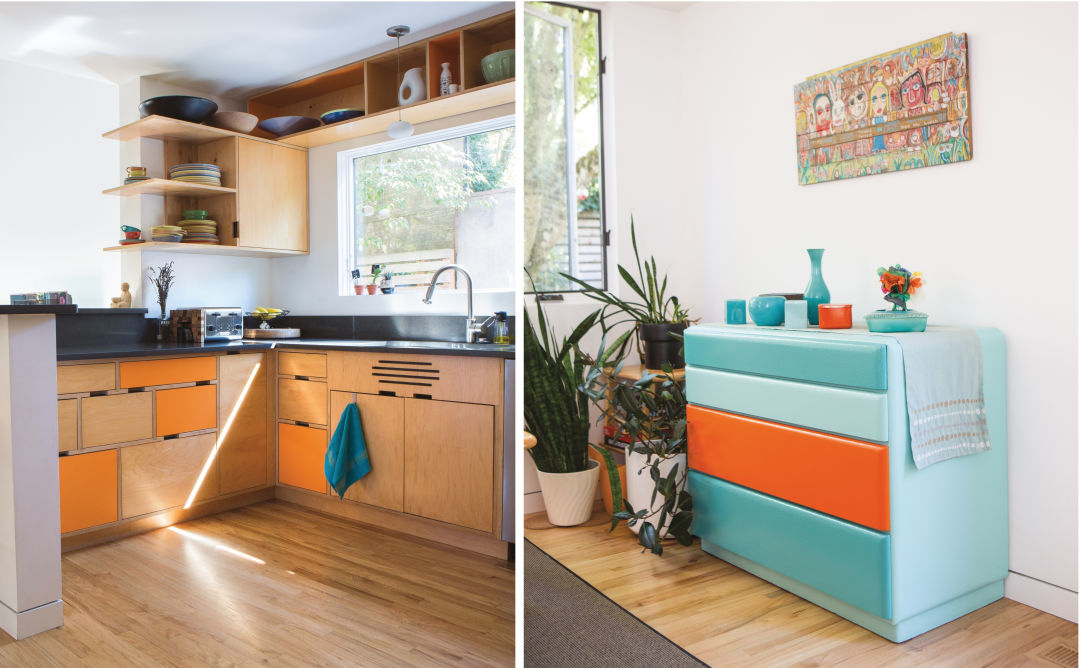
Left: The family moved the hardware-free kitchen cabinetry in its entirety from their previous home. Right: The dining room, with art by Portland painter Chris Haberman.
Image: Christopher Dibble
Brendan and Michelle would arrive four years later, after Erin submitted the house to a Portlandia location-scouting website. Fortunately, in our world, the Leedys’ taste (and far more humble, humane quirk) prevails within.
From the street, the house is boxy and bulky. But step past the threshold and it’s all windows, light, midcentury-modern tables and chairs—with some Ikea purchases mingled in—and art by Chris Haberman, a prolific local painter of cartoonesque icons. In the dining area hangs a Last Supper–inspired piece with Alice, the Mad Hatter, and the March Hare swapped in for the original biblical cast. And in Leedy’s breezeway hangs a triptych of folk heroes—Johnny Appleseed, Paul Bunyan, and Finn McCool—two of which she commissioned Haberman to paint.
A continuous set of stairs connects the home’s four levels, bordered with wooden panels that accompany them all the way up to and wrapping around the top-floor loft. At a first, impressionistic glance, each panel looks like a building where some of the lights have blinked out for the night. Those hollowed-out spaces on each panel appear to be arranged randomly. They’re not.
“I liked the idea of something random, but it quickly became evident that making something random is a lot harder than you might expect,” Greg says. “Then we thought, ‘What if it meant something?’”
After some days spent mulling it over, it came to him: He would translate the names of each family member living there—him, his mother, Erin, and their two kids—into the dots and dashes of Morse code, repeating the pattern over and over, secretly weaving the family’s figurative DNA into the home.
The main common room opens up to include a dining area anchored by a furniture set from Heywood-Wakefield, an age-old American manufacturer; a main living area with an upright piano; and a very modern, colorful, and clean kitchen, designed by Kerf, a small Seattle cabinetry and fixtures firm that produces approachable, warm takes on modernist crispness. Each drawer and door is opened via small recessed pockets, a subtle design decision that gives the kitchen a seamless look and feel. In fact, the Leedys were so enamored with that kitchen that they imported it, piece by piece from their last home in Oak Grove, and installed it to match its previous layout.
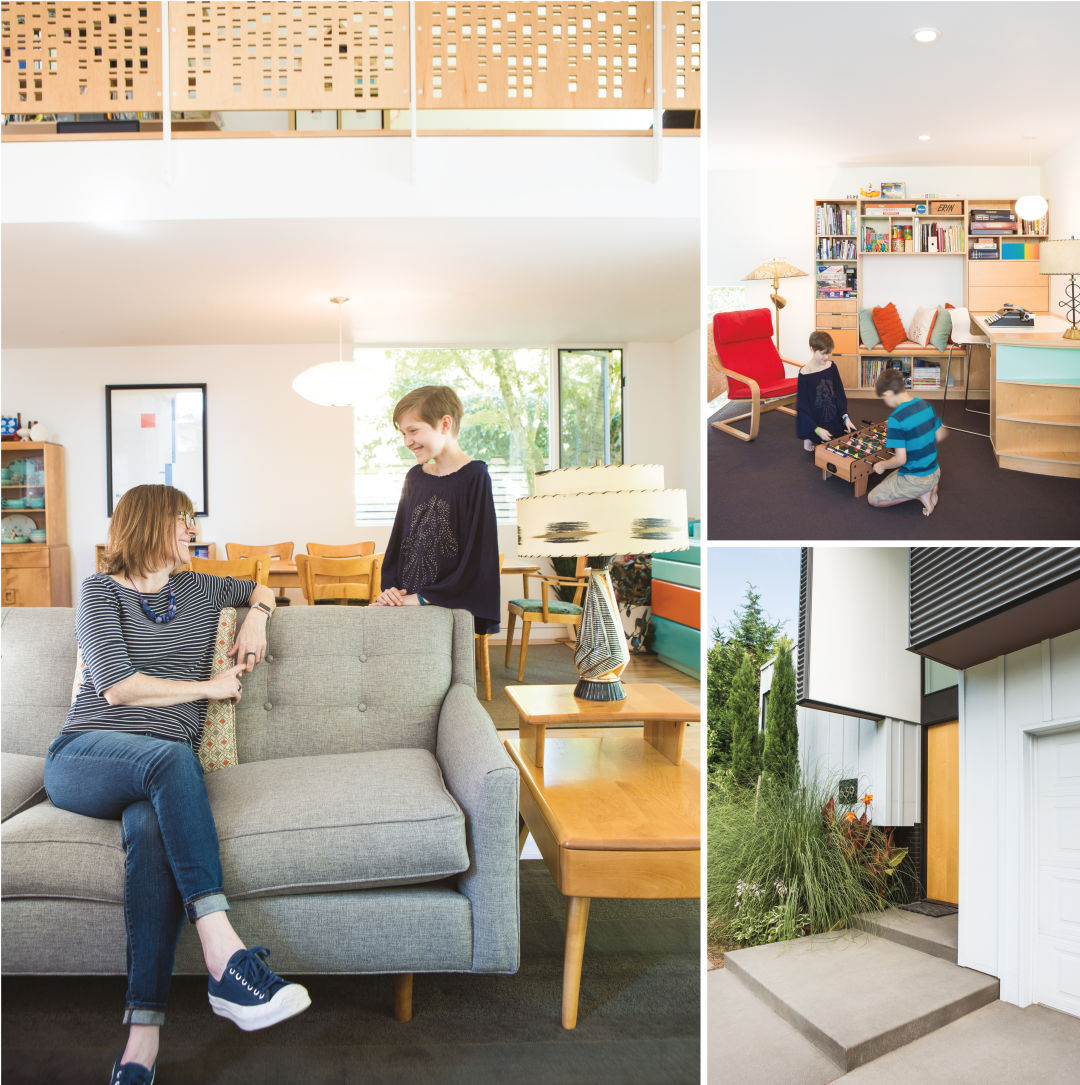
Clockwise from left: Inside, Paul McKean's design maximizes balanced, indirect natural light; a combined office/playroom; McKean's new look for a once-dated ‘60s split-level.
Image: Christopher Dibble
Then there are the floor vents, made of wood to blend into oak flooring with a coat of finish from Sweden. McKean made all window and door frames trimless, a design signature of his.
Light is the real star. Before he opened his own practice, McKean collaborated with a lighting lab in Seattle, known for helping schools determine the best place to install windows. One core principle he absorbed: the importance of balancing an environment’s lighting, particualy by using indirect or diffuse sunlight. “If you have balanced lighting in the classroom, the kids pay attention more,” McKean says. When people are in balanced indirect lighting, McKean says, they tend to be happier and more focused; they feel freer and more relaxed. (He says there’s even some suggestion that kids who study in indirect light get fewer cavities. Now that’s a Portlandia sketch in the making!)
“Paul was careful about choosing where to place each window,” Erin says, noting that the architect invested as much thought and care into the family’s privacy as he did into letting in the right kind of sunlight.
Because of its design—and the industrial designers who helped dream it up—the Leedy House is a big, bright, playful, colorful space that evokes calm and safety. Brendan and Michelle don’t deserve it.
